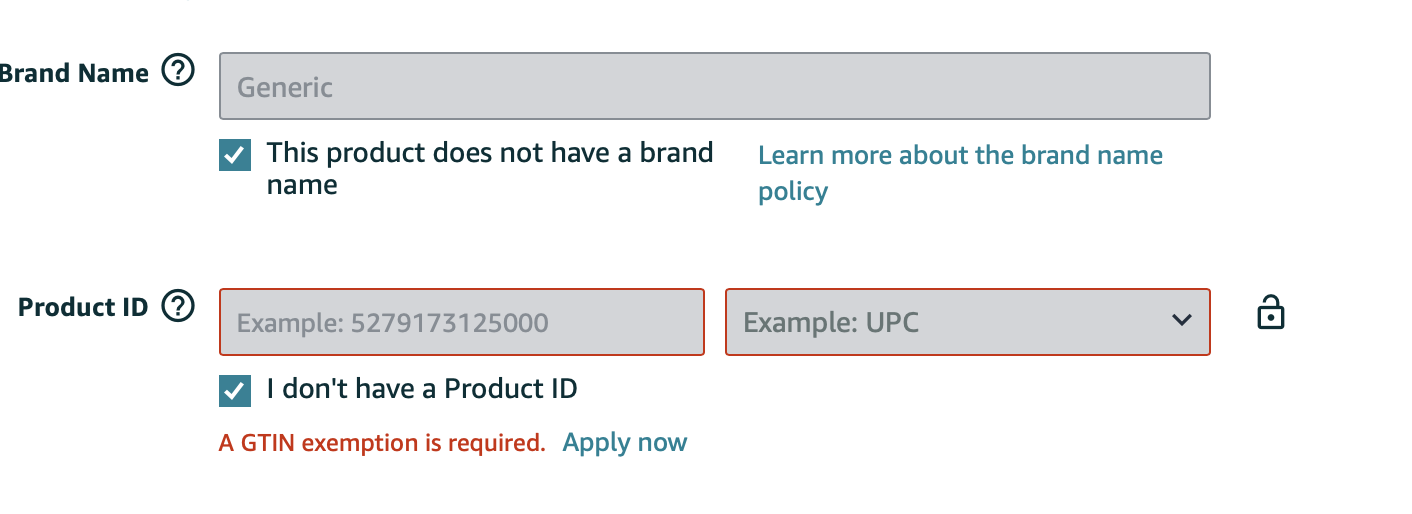Countries
Read onlyNew Seller Community
GTIN Exemption Approved but unable to list
2 replies
Seller_CW0P5hgbsiqWX
Remember, it costs no more to fail in online retail sales as it does to succeed in online retail sales. The difference is how much knowledge you possess to put forth in your endeavors at hand.
With over 600 million products sold on the Amazon site, Amazon is not interested in having one more sold. Will Amazon come out and say this, NO. They will just keep sellers hanging in limbo until they give up.
Selling a product and using the word Generic as a brand is rather foolish. Generic is not a brand, it is a word that means similar to the real thing, but not the real thing. Now what does that say about your product. It tells the buyer your product is not the real thing but a copy or knockoff. Sort of a poor way to start a business.
Do you know how retailers work with manufacturers? Generic products you are talking about are made specifically with no brand name on them, (Generic). They are made for retail stores, like you, to purchase and place their own name/brand on them. This can either be done at the factory or done in your own place of business.
Here is an example. Walmart and Target each purchase 10,000 of the same generic product from the manufacturer. They come with no UPC. When received, Walmart places its GS1 UPC on their shipment, and Target does the same. When the items are scanned at Walmart and/or Target, everything works just fine and the single unit is deducted from inventory. NOW…When the Walmart buyer tries to return the same item to Target to get a larger refund, the product is rejected as not being sold by Target.
Now even Amazon knows how this works. Amazon owns 100+ brands it sells on the site which are actually Generic products, Amazon just labels the items with different brand name Amazon created. Maybe Amazon thinks it is time for you to do the same.
Remember, it costs no more to fail in online retail sales as it does to succeed in online retail sales. The difference is how much knowledge you possess to put forth in your endeavors at hand.
MAKING GERENIC ITEMS YOURS
1. Make it yours. For a onetime $300 investment in a Pad Stamper, you can tamp your logo/brand on any generic object. After all, that is what they are made to do... Make them yours.
2. Packaging your product. You can either do it yourself or pay to have a someone else do it for you. But remember presentation of your product is a very important part of the whole sale.
Depending on the product size, it is not hard to do it yourself if you have a printer, some type of Print Shop software, some heavy card stock to print on, and a shrink Wrap bag. With a little forethought, simply design a page to fit your product. There are too many ways to do this to go into here. Just make sure your print content has everything necessary for the product sale,
3. Model Number. Make sure you assign a model number to your product. It looks official and there are always more products to add to your product line. Just don't stop at one. Take the profits from your model number 1050 and invest ii new products.
4. UPC's. If it is going to be your product, make it yours with official UPC's from GS1. We do buy GS1 UPC's and print them on Avery 30 to a page label which can be placed anywhere we want.
Danny_Amazon
Hello @Seller_aGg1VEh0iEFac thanks for joining us here on the forums!
I would recommend comparing against the 'Things to remember' section of this help page in case any of those are applicable.
It also has a seller university video on listing products post GTIN exemption that you might find helpful. Also be sure to doublecheck the listing to make sure all details are exactly the same.
If that doesn't help correct the issue, please reach out to our seller support teams for some more specific troubleshooting.
Thank you,
Danny

